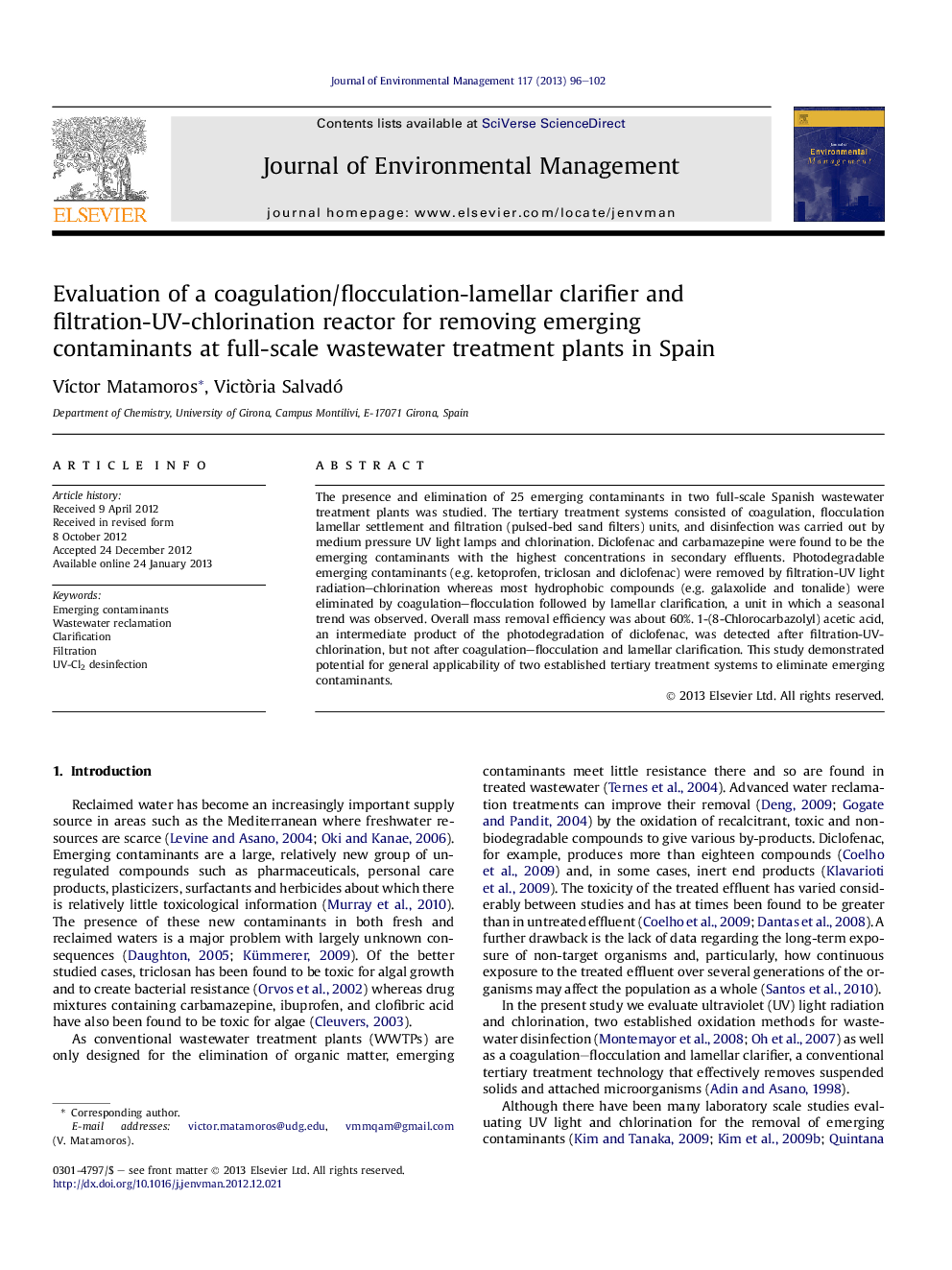| Article ID | Journal | Published Year | Pages | File Type |
|---|---|---|---|---|
| 1056305 | Journal of Environmental Management | 2013 | 7 Pages |
The presence and elimination of 25 emerging contaminants in two full-scale Spanish wastewater treatment plants was studied. The tertiary treatment systems consisted of coagulation, flocculation lamellar settlement and filtration (pulsed-bed sand filters) units, and disinfection was carried out by medium pressure UV light lamps and chlorination. Diclofenac and carbamazepine were found to be the emerging contaminants with the highest concentrations in secondary effluents. Photodegradable emerging contaminants (e.g. ketoprofen, triclosan and diclofenac) were removed by filtration-UV light radiation–chlorination whereas most hydrophobic compounds (e.g. galaxolide and tonalide) were eliminated by coagulation–flocculation followed by lamellar clarification, a unit in which a seasonal trend was observed. Overall mass removal efficiency was about 60%. 1-(8-Chlorocarbazolyl) acetic acid, an intermediate product of the photodegradation of diclofenac, was detected after filtration-UV-chlorination, but not after coagulation–flocculation and lamellar clarification. This study demonstrated potential for general applicability of two established tertiary treatment systems to eliminate emerging contaminants.
Graphical abstractFigure optionsDownload full-size imageDownload as PowerPoint slideHighlights► We studied the elimination of emerging contaminants in two water reclamation plants. ► Hydrophobic compounds were removed by coagulation/flocculation-lamellar clarification. ► Photodegradable contaminants were removed by filtration-UV-chlorination unit. ► Overall mass removal efficiency of the studied emerging contaminants was about 60%. ► A photodegradation intermediate product was identified after the UV light radiation.
